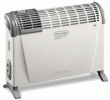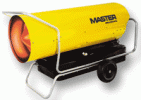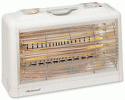Supplemental Heaters
DIY Encyclopedia
Search
Baseboard Heater
A convection-type heater. The heating elements are completely enclosed, so they are safe for use around small children, but they do not give...
Ceramic Heater
A convection-type heater. Uses a ceramic disk heating element. Ideal for spot heating. Lightweight and easy to carry. Safe alternative to...
Duct Fan
Boosts the flow of air from the central heating system to areas in a house that are hard to heat or cool. Overcomes the added resistance in...
Duct Insulation
Insulates ductwork to minimize heat loss and improve efficiency. Available either as self-stick vinyl foam with aluminum foil backing or in...
Electric Heater
Plugs directly into a wall unit. One type uses black heat, where heating elements have the heating wire wound around a porcelain...
Fan-Forced Heater
A convection-type heater. Uses fuel and electricity to circulate hot air around the area to be heated. Fans blow a gust of warm air that is...
Kerosene Heater
Uses a wick rather than a pressure-fed fuel system. Standard features include an automatic shut-off device to extinguish the flame if the...
Non-Vented Gas Heater
Requires no outside vent. Suitable for zone heating and is clean burning and inexpensive to operate. Uses an oxygen depletion sensor (ODS)....
Oil-Filled Heater
A convection-type heater that contains a factory sealed oil reservoir that never needs changing or replenishing. A tubular heating element...
Radiant Heater
Directs infrared heat to the objects or people to be warmed. For short periods of time, these heaters are more energy-efficient than convection...
Store Locator
Find an independent merchant near you.

















